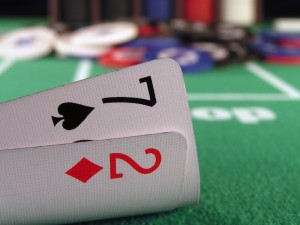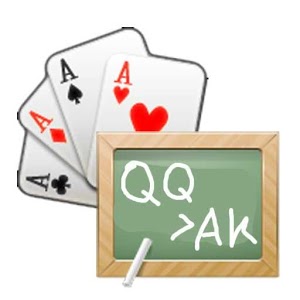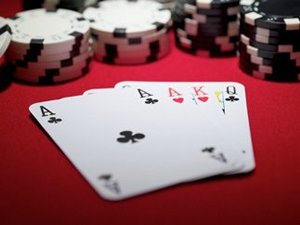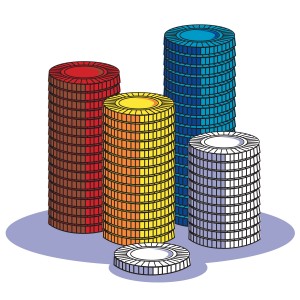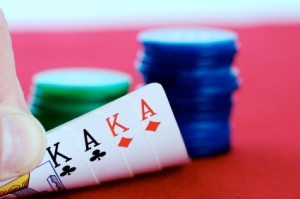The ambiguity of the bet
This is an edited excerpt from Jeff’s book, Advanced Pot-Limit Omaha: Small Ball and Short-Handed Play.
One of the built-in features of positional advantage lies in the ambiguity of the bet. When you bet into five people from one of the blinds, you usually have either a strong made hand or a strong draw, but you are rarely bluffing. In contrast, when you are on the button, and everybody checks to you and you bet, your bet is a lot more ambiguous, as every bet that you make is viewed as a possible steal.
This creates natural deception, which keeps your opponents off balance. In fact, just routinely playing with positional advantage and utilizing the button yields plenty of deception, because if most of your bets come from late position, where you are naturally betting light much of the time, your opponents will get the impression that you never have anything.
Yet, a lot of players mistakenly believe that they need to raise every hand preflop and look like maniacs in order to create deception and get paid off, when all they really need to do to create deception is play their button.
Here are a few examples of the kind of action that a player with a relatively passive preflop playing style can generate simply by constantly betting from late position. After a while, if you bet the button enough, your opponents sometimes will just stop believing you.
Hand No. 1: Straight on a Flush and Paired Board
The game: $2-$5-$10 with a Mississippi straddle
My position: Button straddle
My hand: Q 10
10






























Preflop: I ($2,200) post the $10 straddle on the button. Both blinds fold. An early-position player ($700) — who is very tight and rarely raises preflop — raises to $25. A middle-position player ($750) calls, and it is folded to me. I call.
Flop ($82): J





































Turn ($242): A












River ($542): J


























































That strikes me as one hell of a parlay. First, my opponent had to call a pot-sized bet on the flop from out of position with a bare open-end straight draw on a two-flush board. Then, he had to call with the straight when the flush card hit, and then call another bet on the river when the board paired.
Granted, by the river, there aren’t too many hands with which I could have legitimately bet all three streets — but damn.
Hand No. 2: Aces
The game: $2-$5
My position: Button
My hand: A















































Preflop: Only a middle-position player limps in front of me. I call. The small blind calls, and the big blind checks.
Flop ($20): 9



































This is a perfectly reasonable bet from the button with a double gutshot-straight draw.
Action: Both blinds fold, but the other player calls.
Turn ($60): 2












This is a perfectly reasonable follow-through bet.
Action: My opponent calls.
River ($180): J



























































Hand No. 3: Aces
The game: $5-$5, three-handed
My position: Button
My hand: A









































Preflop: I ($2,700) open with a raise to $15. The small blind folds. The big blind ($1,500) reraises to $30. I call.
Flop ($65): J






























I can’t help myself sometimes. This is a naked float against a standard continuation-bet, and I’m probably pushing it a little bit.
Turn ($165): 2






River ($495): 10






















































Note that had I actually caught any piece of that flop, there’s not much that I could have had by the river that doesn’t beat a pair of aces.
Adjustments: Cutting Back
The first two hands were from my “Bet the Button Every Time” phase, while the third was from my “Float Every Time” phase. That said, there probably is something such as too much action.
What it comes down to is taking what your opponents give you. If your opponents are willing to give up the pot every time they check to you, keep firing away until they start looking you up or playing back at you. If they start calling you down light every time, cut back, take advantage of your loose image, and start showing them a hand. Instead of betting every time, perhaps settle on betting top pair or better from the button in multiway pots. And perhaps restrict your float attempts to when you actually have some piece of the board or some kind of draw.
But you can see how much action a reasonably tight player such as myself can generate simply by playing the button, where every bet is liable to be construed as a possible steal. Simply playing from the button makes your bets ambiguous, which causes your opponents to make mistakes. Eventually, you will catch them making a mistake in a big pot.
Submit your review | |

